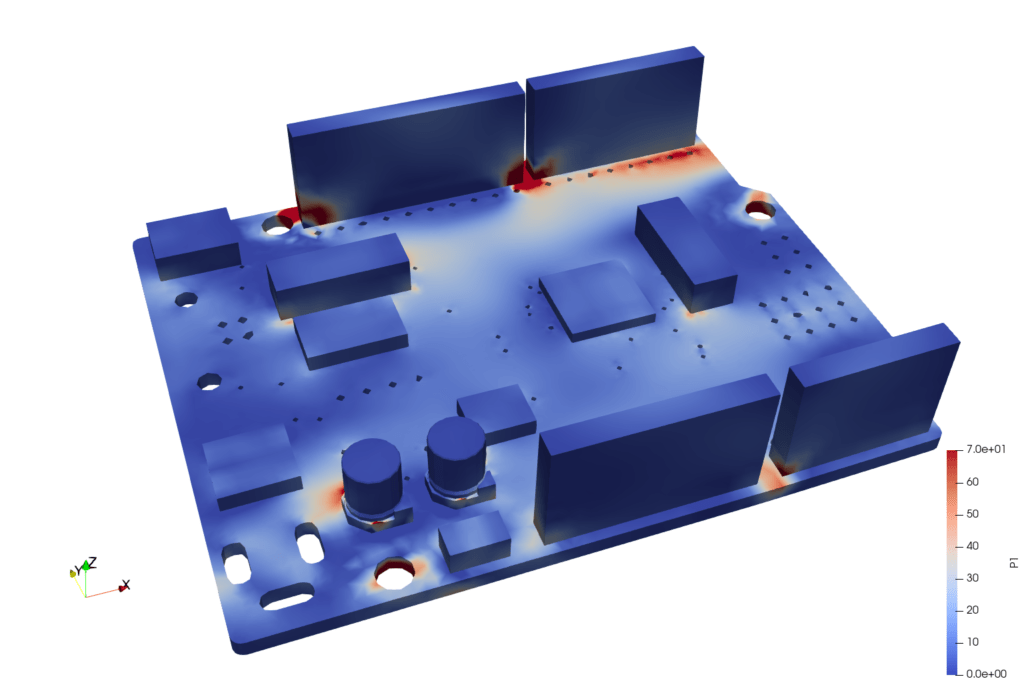Why shock analysis/test?
It is often recommended to use subsystem level shock test/analysis to qualify a subsystem module or compare design decisions. There are a few reasons,
- System level drop or crash test/analysis are usually time consuming in terms of both model setup and computation. A subsystem level test/analysis can provide much quicker guidance to PD decisions.
- A good fidelity system level design may not be available when selecting or developing a subsystem.
- System level test has significantly increased complexity and sources of uncertainty. It is usually not as repeatable as subsystem shock tests.
How shock test work?
In a physical shock test, a subsystem is usually mounted on a fixture which is usually a cube to enable XYZ shock directions. The cube is mounted on a shock table by tightened bolts. It worth noting that the tightening force is critical as an insufficient one will lead to ringing or gaping. During the test, the shock tale is elevated and dropped, guided by rails. The entire shock table will impact on a thin layer of rubber or foam sheet to create a half sine pulse. Through adjusting the thickness and properties of the thin sheet, different magnitude and duration of the shock pulse can be achieved. If required shock pulse is beyond the capability of the shock table, one may consider use Dual Mass Shock Amplifier (DMSA).
What can FEA simulation help?
Using a reasonable SRS shock pulse is critical for shock test. FEA simulation is a powerful tool that can help extract this information. Take drop simulation for example, one can build up a system level free fall drop model based on either current design or previous similar product. Based on the simulation, analysts can extract the average acceleration right on a mounting interface and fit an ideal SRS curve to feed the test.

Once a baseline FEA model is correlated to the physical test, analysts can also iteratively optimize the design through subsystem level shock simulations. The velocity associated with the desired SRS pulse can be prescribed on the mounting interface of the subsystem to identify and compare failure risks. Note that the SRS pulse is a form that can be easily communicated between teams and vendors, without the need to transfer the entire system level model.
What are the limitations?
Shock test assumes the subsystem level failure is negligibly affected system level deformation, which is usually reasonable for small modules such as cameras. For large components such as PCB, however, the system level deformation may also affect the stress/strain on the board. In this scenario, shock analysis is still a good measurement of A to B comparison, but absolute failure need to be studied through system level test/simulation


